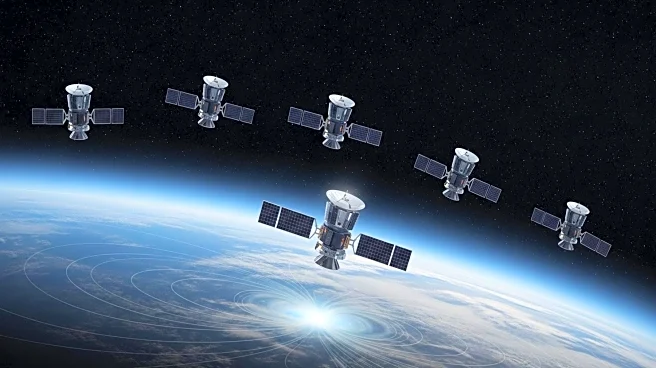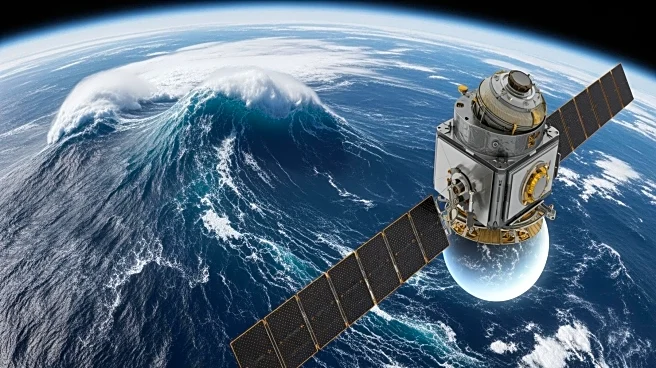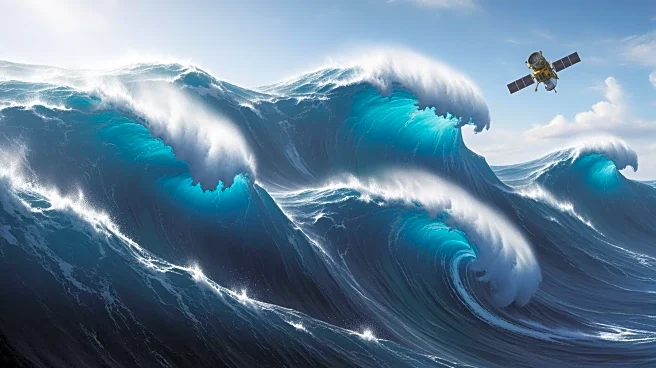What's Happening?
Satellites have captured the largest ocean swells ever recorded, demonstrating the ability of giant waves to transport storm energy across vast distances. A North Pacific storm, known as Storm Eddie, generated waves reaching heights of nearly 65 feet,
or 20 meters, in December 2024. These waves traveled thousands of miles, showcasing the power of storms to affect distant coastlines even when the storm itself does not make landfall. The European Space Agency (ESA) reported that these record-breaking waves were observed using the Surface Water and Ocean Topography (SWOT) satellite's wide-swath radar imaging, providing a global view of storm waves. The swells, acting as 'storm messengers,' carry destructive energy far from their origin, causing erosion and flooding on remote coastlines.
Why It's Important?
The ability to measure and understand these massive ocean swells is crucial for predicting and mitigating the impact of storms on coastal communities. By analyzing the energy carried by these waves, scientists can infer storm strength and issue warnings to areas that may be affected by erosion and flooding. This research challenges previous assumptions that long swells carry most of a storm's energy, revealing that shorter, steeper waves also play a significant role. The findings have implications for coastal management and disaster preparedness, as they provide insights into how storm energy is distributed and transmitted across oceans.













